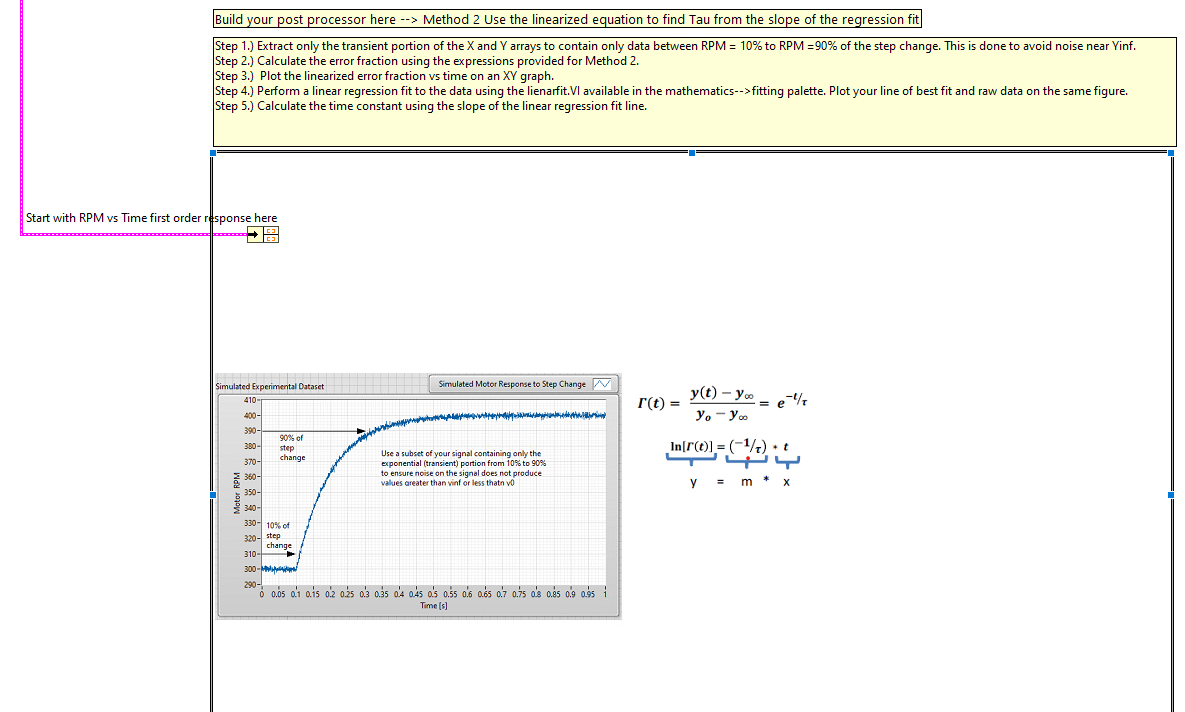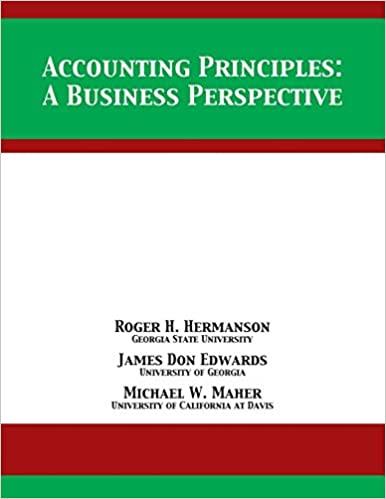I need some help building a code in Labview.
Build your post processor here --> Method 2 Use the linearized equation to find Tau from the slope of the regression fit Step 1.) Extract only the transient portion of the X and Y arrays to contain only data between RPM = 10% to RPM =90% of the step change. This is done to avoid noise near Yinf. Step 2.) Calculate the error fraction using the expressions provided for Method 2. Step 3.) Plot the linearized error fraction vs time on an XY graph. Step 4.) Perform a linear regression fit to the data using the lienarfit.VI available in the mathematics-->fitting palette. Plot your line of best fit and raw data on the same figure. Step 5.) Calculate the time constant using the slope of the linear regression fit line. Start with RPM vs Time first order response here Simulated Motor Response to Step Change y(t) - Yo - e () r(t) = t yo-y. = % e- wwwwww www Simulated Experimental Dataset 410 400- 390- 90% of 380 step . 370- change 360- 90 350- In[ro] =(-1/2).t LY y = m* x Use a subset of your signal containing only the exponential (transient) portion from 10% to 90% to ensure noise on the signal does not produce values areater than vinf or less thatn vo - 340- 330- 10% of 320 - step change 310 300- 2002 0 0.05 ar ais 0.2 0.5 0.3 0.3 0.4 0.45 a's 0.55 0.6 0.6 0.7 0.7 0's 0.5 0.9 of Time (s) Build your post processor here --> Method 2 Use the linearized equation to find Tau from the slope of the regression fit Step 1.) Extract only the transient portion of the X and Y arrays to contain only data between RPM = 10% to RPM =90% of the step change. This is done to avoid noise near Yinf. Step 2.) Calculate the error fraction using the expressions provided for Method 2. Step 3.) Plot the linearized error fraction vs time on an XY graph. Step 4.) Perform a linear regression fit to the data using the lienarfit.VI available in the mathematics-->fitting palette. Plot your line of best fit and raw data on the same figure. Step 5.) Calculate the time constant using the slope of the linear regression fit line. Start with RPM vs Time first order response here Simulated Motor Response to Step Change y(t) - Yo - e () r(t) = t yo-y. = % e- wwwwww www Simulated Experimental Dataset 410 400- 390- 90% of 380 step . 370- change 360- 90 350- In[ro] =(-1/2).t LY y = m* x Use a subset of your signal containing only the exponential (transient) portion from 10% to 90% to ensure noise on the signal does not produce values areater than vinf or less thatn vo - 340- 330- 10% of 320 - step change 310 300- 2002 0 0.05 ar ais 0.2 0.5 0.3 0.3 0.4 0.45 a's 0.55 0.6 0.6 0.7 0.7 0's 0.5 0.9 of Time (s)







